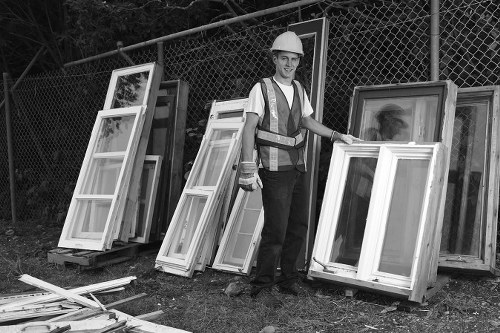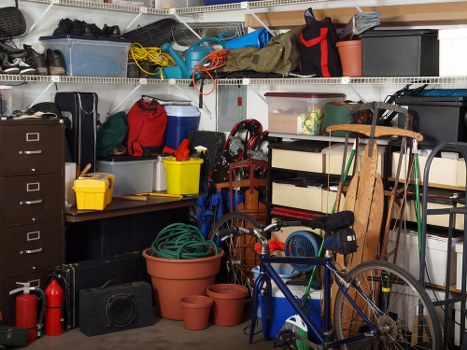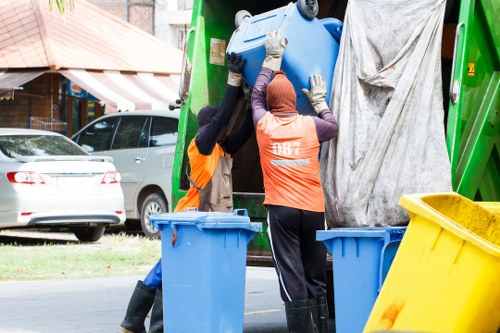White Goods Recycle in Rubbish Clearances: Sustainable Solutions for a Greener Future
Introduction

White Goods Recycle in Rubbish Clearances has become a pivotal element in modern waste management strategies. In recent years, environmental concerns and the need for efficient rubbish clearances have driven both households and industries to re‐evaluate how they dispose of large domestic appliances. These appliances, often referred to as white goods, include refrigerators, washing machines, and ovens. Recycling these items not only reduces landfill pressure but also conserves finite resources for future use. Environmental sustainability is now recognized as fundamental, and incorporating recycling into rubbish clearance initiatives has never been more essential. In today’s evolving eco‐landscape, every step taken towards responsible recycling practices is a stride in the direction of a healthier planet.
Modern rubbish clearances are undergoing a revolution through the introduction of specialized recycling services dedicated to white goods. This shift is underpinned by the urgent need to minimize hazardous waste and reduce unnecessary pollution. White goods recycling is a multi‐faceted process, engaging several stages from careful dismantling to the recovery of materials like steel, aluminum, and high-grade plastics. Each stage is meticulously managed so that the disposal process adheres to contemporary environmental standards. Moreover, increased consumer awareness has played a significant role, prompting many to search for sustainable disposal options that combine efficiency with ecological sensitivity.
The objective of integrating white goods recycle in rubbish clearances is twofold: to protect natural resources and to foster a circular economy model. Such initiatives help in reclaiming valuable metals and other recyclable components, significantly decreasing the overall environmental footprint. Many companies are now offering specialized services to ensure that recycling procedures conform to industry safety norms and environmental regulations. As the demand for sustainable practices grows, it is imperative that individuals and businesses alike recognize these services. Contact us today to learn more about how you can contribute to a greener tomorrow by opting for environmentally sound rubbish clearance solutions.
Understanding White Goods Recycling

The term white goods recycle in rubbish clearances refers to the systematic process of repurposing outdated household appliances. These large electrical devices, commonly known as white goods due to their color, include items such as refrigerators, freezers, and washing machines. At its core, white goods recycling is both a technical and logistical endeavor. It involves not only the dismantling of bulky items to extract recyclable materials but also ensuring that hazardous substances, such as refrigerants and heavy metals, are managed properly. This multi-stage process demands precision and care, combined with innovative techniques to maximize resource recovery and minimize waste.
Modern recycling strategies underscore a blend of advanced technology and eco-friendly initiatives. Sophisticated sorting equipment, robotics, and thermal recycling methods now enable service providers to separate and process various components of white goods efficiently. These technologies ensure that the recovered materials are suitable for re-use in manufacturing, thereby reducing the need for raw materials extraction and lowering the overall environmental impact. Furthermore, integrating these innovative methods into rubbish clearance operations has heightened the efficiency and transparency of the recycling process.
Beyond the technical procedures, white goods recycling is also about fostering sustainable consumer habits. When households properly dispose of their old appliances, they are actively participating in a broader ecological movement aimed at reducing pollution. This process is especially crucial as the accumulation of non-recyclable waste can lead to severe environmental degradation. Manufacturers are beginning to integrate guidelines on recycling into product designs, ensuring that future versions of these appliances are easier to dismantle, recycle, or upgrade. By merging responsible waste management with modern technology, white goods recycle in rubbish clearances stands as a cornerstone of environmental stewardship in the 21st century.
Rubbish Clearances and Service Methods

The realm of rubbish clearances has evolved dramatically over the past decade, with a strong push towards sustainability. Traditional waste disposal methods are quickly being replaced by environmentally conscious practices that prioritize recycling and repurposing. A major element in these practices is the integration of white goods recycle into the comprehensive clearance process. With the rise of regulations that promote ecological responsibility, companies are now investing in specialized fleets and trained personnel to manage large-scale rubbish clearances. These experts ensure that every appliance is handled with precision, reducing the likelihood of accidental damage to recyclable parts or the release of hazardous substances.
Key Procedures employed in modern rubbish clearances involve systematic planning and execution. Initially, the items targeted for recycling undergo a detailed assessment to identify components that can be salvaged. Following this evaluation, safe deconstruction procedures commence, during which valuable materials such as metals and plastics are carefully separated. Furthermore, service providers meticulously document these processes to maintain compliance with national and international environmental regulations. This level of thoroughness not only guarantees that harmful substances are managed appropriately but also that recovered resources can be efficiently reintroduced into the supply chain.
To further enhance the efficiency of rubbish clearances, many organizations adopt a combination of on-site sorting and centralized recycling facilities. For many households and businesses, this dual-approach mechanism ensures that white goods are promptly removed and processed with minimal delay. In some cases, modern clearance services also offer eco-certification, providing assurance that all procedures meet stringent sustainable standards. As awareness grows, consumers are increasingly drawn to companies that adhere to these best practices, making professional rubbish clearance and white goods recycling a preferred choice for those who wish to invest in a healthier environmental future.
Environmental and Economic Benefits

The environmental benefits of incorporating white goods recycle in rubbish clearances are multifaceted and far-reaching. Recycling major appliances significantly reduces the volume of waste that ends up in landfills, thereby mitigating the adverse effects on soil and groundwater. Moreover, recycling prevents the release of harmful chemicals and greenhouse gases, which are often generated during the breakdown of complex electrical components. By ensuring that components like plastics, metals, and electronic circuits are reprocessed, the environmental footprint is markedly reduced. Conservation of resources is also a major advantage, as valuable raw materials are recovered and reused in production processes.
Alongside the direct environmental gains, white goods recycling offers notable economic benefits. The recovered materials often have a significant resale value, which can offset the cost of the clearance process. In addition, recycling initiatives generate employment opportunities in the areas of collection, processing, and material repurposing. This synergy between economic growth and environmental stewardship creates a robust framework in which communities and businesses can thrive. The transition towards a circular economy has made recycling an attractive option for investors and policymakers, establishing it as a lucrative supplement to traditional waste management systems.
There are numerous advantages that extend to local communities when white goods are responsibly recycled. The key benefits include:
- Reduced landfill waste: Less waste going to landfills helps lower operational costs and environmental hazards.
- Resource conservation: Reused materials decrease the need for new raw materials extraction.
- Job creation: Recycling operations stimulate local economies by creating skilled job opportunities.
- Enhanced community well-being through decreased pollution and healthier living conditions.
Choosing the Right Service & Conclusion

When it comes to selecting a service provider for white goods recycle in rubbish clearances, it is crucial to consider a number of factors that ensure accountability, compliance, and quality. First, investigate the company’s environmental credentials and certifications to verify that they adhere to strict eco-friendly practices. Check if the provider offers detailed documentation on the recycling process and if they engage in sustainable waste management practices. A reputable service will have robust policies in place to ensure that hazardous materials are handled safely. Furthermore, customer reviews and case studies are excellent resources to gauge the efficiency and reliability of the organization. In our fast-evolving world, it is essential to work with professionals who prioritize both speed and environmental responsibility.
Here are some tips to help you choose the right service provider:
- Experience: Look for companies with a long-term track record in white goods recycling and rubbish clearances.
- Transparency: Select a provider that is open about its methodologies and environmental impact reports.
- Customer support: Ensure that the company offers efficient customer service and clear communication channels.
- Certifications and awards, which often serve as a validation of the company's commitment to sustainable practices.
By taking these steps, you not only guarantee the effective removal and recycling of your unwanted appliances but also contribute to a broader environmental cause.
In conclusion, the integration of white goods recycle in rubbish clearances is a crucial advancement in sustainable waste management. The combined benefits of environmental protection, economic gains, and the promotion of a circular economy underscore the importance of adopting these practices on a wide scale. Whether you are a homeowner looking to responsibly dispose of aging appliances or a business aiming to enhance your corporate sustainability, embracing modern rubbish clearance services is the best option available. Remember, every step you take today paves the way for a cleaner, greener future. Book your service now and join the movement towards sustainable living, ensuring that we all contribute to a healthier planet for generations to come.